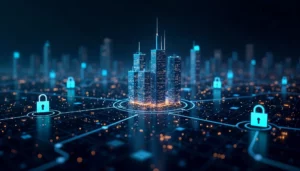FOCUS
5G: the development stages and the 5G Core road map
5G Core technology is the basis of the numerous 5G use cases developed so far in contexts ranging from manufacturing to health care, which make use of the very low latency and high throughput characteristics of the new networks. Italtel is committed to the development of this technology and has built its own end-to-end turn-key solution.
The 5G era has already begun, but we are still at the gates. It all started at the end of 2018, when 3GPP consolidated the specifications relating to the radio portion, allowing for the creation of what is known as 5G Non-Standalone Architecture (NSA). In essence, it was possible to enhance the radio capacity by combining the existing e-NBs (i.e. the 4G radio already in use) with the en-gNBs, i.e. the 5G New Radio, which has the capacity to connect to a 4G Mobile Core (EPC).
This trick made it feasible to immediately start enjoying the initial benefits of the new mobile generation, thanks to an increase in band throughput driven by the radio alone, approximately 30% higher than the existing 4G (e-NB).
In the NSA architecture, there are various ways to combine 4G and 5G radios, but all of them are built with a common denominator; that is, with the e-NB being solely responsible for the exchange of user signaling with the 4G Mobile Core. From here, there are different variants: 5G NR is totally subservient to the e-NB, always directing the signaling and data to the e-NB; alternatively, 5G NR sends its own data share directly to the network while always using the e-NB to control signaling, or 5G NR is totally responsible for the data flow while the e-NB is responsible for signaling only.

Clearly the 5G road map does not end here, because the requirements underlying this mobile generation cannot be separated from an evolution of both the Mobile Core and the entire ecosystem that supports it. Massive deployments of 5G architectures that also include 5G Core are around the corner, thus opening a new phase toward a full-5G model that allows us to benefit from a series of groundbreaking services that were obviously unavailable in previous mobile generations.
What is changing compared to 4G
The 5G Core introduces two new main innovations compared to 4G: the strong separation of functions, and the way these functions communicate with one another. The 4G EPC has four main functions as basic components: MME, SGW, PGW and HSS. Next to them are the Policy&Charging components. The 5GC, on the other hand, greatly increases the number of Network Functions and, according to the reference specification, today there are almost thirty or so of them (Ref. 3GPP TS 23.501 V16.4.0). This strong fragmentation of 5G Core functions allows, first of all, a better scalability of such functions, and then a greater focus on the only set of contents that they can deliver, thanks to an increasingly widespread use of a model based on micro-services. This last approach leads to greater interaction among the same components using REST APIs, in a Consumer-Producer logic.
The separation between network planes
Furthermore, the 5G Core topologically develops a model which was already being outlined with 4G Core (EPC), and consisted of a separation between control and signaling planes (Control User Plane Separation). This scheme enables a network distribution process, allowing the exchange points of the data flow between user and network to be located on the edge, while keeping its control functions at the center. These architectures allow a wide set of use cases called uRLLC (ultra Reliable Low Latency Communication) to be enabled, where it is absolutely necessary to guarantee a very low latency in the user-application interaction.
The development of the network with the distribution of the user-plane components on its edge will be one of the most important challenges that Communication Service Providers have to face. Building the network following this new paradigm will be technologically demanding and will require adequate investments. This is the reason why many companies are entering into agreements with some Public Cloud Service Providers (for example AWS, Google, Azure, and so on), so as to be able to take advantage of their widespread diffusion on the territory, thus implementing the requirement of 5G network distribution more quickly, which is essential for the proper use of the entire environment.
Italtel’s vision on 5G Core
Italtel deeply believes in the added value that the entire 5G environment can bring to the market and in particular for the Enterprise segment. For this reason, we have built an end-to-end turn-key solution that can include the different network stages, from the fully software-driven radio to the 5G Core, from transport networks between parties to data centers. Also worth mentioning are the Orchestration and Automation systems for the entire set of professional services for the realization of the project and for the support and integration with the existing installation, as well as a large catalog of applications to hit different market areas effectively.
In the 5G Core field, Italtel has designed the development of many of its products toward different 5G network functions. First of all, there is i-TDS, our HSS/HLR available in the catalog both for existing mobile network architectures and for voice networks, which will evolve toward 5G, including all the necessary functions for the 5G Subscriber Data Management layer (UDM/AUSF-UDR), in Cloud Native mode.
The edge SEPP (Security Edge Protection Proxy) function for interconnecting 5G cores in roaming scenarios will be a new functional component of NetMach-S. The SCP (Service Communication Proxy), an element necessary for signaling exchange within complex and highly distributed 5G Cores, is also one of the new 5G functional segments within i-RPS.
The following figure illustrates the 5G functionalities that Italtel has in its portfolio, complementing the offer from our reference partner so as to deliver a complete 5G Core. Alternatively, the same features may also be integrated into 5G deployments with different vendors.



